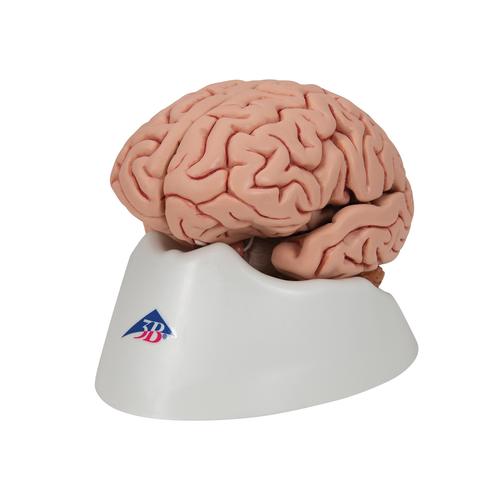
This has interesting implications for neuroanatomy.
Model of the brain update#
On encountering data, we update our beliefs to form a posterior belief about the world. Another way of putting this is that we have prior beliefs about the state of the world, and beliefs about how this gives rise to sensations. Under this view, our brains possess an internal (generative) model of our environment that we use to predict sensory data, and to explain current data in terms of their causes ( Friston et al., 2006). This paper is based upon the notion that brain function can be framed as Bayesian inference ( Kersten et al., 2004 Knill and Pouget, 2004). Ultimately, committing to an anatomical theory of inference ensures we can form empirical hypotheses that can be tested using neuroimaging, neuropsychological, and electrophysiological experiments. In doing so, we attempt to show how appealing to generative models enables us to account for anatomical brain architectures. We illustrate this idea in four different domains: perception, planning, attention, and movement.

Specifically, neuronal populations representing beliefs about a variable must receive input from populations representing the Markov blanket of that variable. We argue that the form of the generative models required for inference constrains the way in which brain regions connect to one another. In this paper, we review and develop the anatomical aspects of this process theory. Recently, a process theory has emerged that attempts to relate inferences to their neurobiological substrates. This has been successful in accounting for a wide range of physiological and behavioral phenomena.

Active inference is a principled framework that frames perception and action as approximate Bayesian inference. It also entails inferences about how we will act.

This necessitates passing local messages between populations of neurons to update beliefs about hidden variables in the world beyond its sensory samples. To infer the causes of its sensations, the brain must call on a generative (predictive) model. Wellcome Centre for Human Neuroimaging, Institute of Neurology, University College London, London, United Kingdom.


 0 kommentar(er)
0 kommentar(er)
